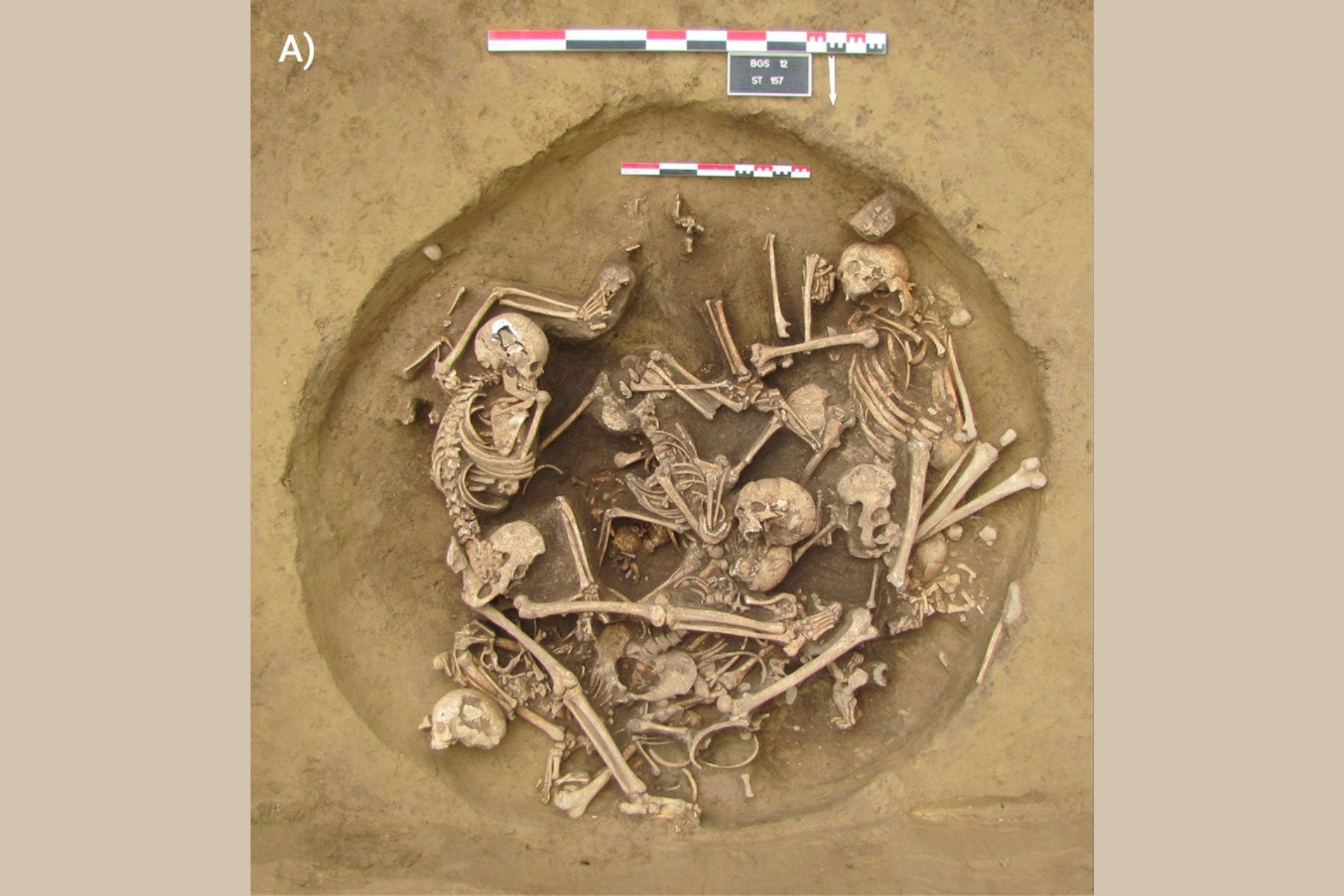BREAKING: New research published today in Science Advances uncovers shocking evidence that Neolithic people in northeastern France brutally mutilated their prisoners of war. This study, involving the analysis of skeletal remains, suggests these ancient communities engaged in horrific victory celebrations, marking a dark chapter in prehistoric warfare.
The international research team focused on burial pits dating from 4300 to 4150 BCE near Strasbourg, specifically in the sites of Achenheim and Bergheim. They examined a total of 82 human remains, revealing gruesome wounds indicative of extreme violence. The findings point to a chilling practice: local groups may have killed invading forces and displayed trophies, such as severed upper limbs, in what could be one of the earliest records of war-related celebrations in Europe.
Researchers, led by Teresa Fernandez-Crespo from Valladolid University, discovered significant differences between the remains of victims and non-victims. The analysis showed that the brutalized remains likely belonged to foreign invaders, while locals received regular burials. “The victims can be attributed to socially remote, nonlocal enemies that became trophies during battles,” the team stated.
This alarming research sheds light on the violent realities of the Neolithic period, a time previously thought to be dominated by peaceful communities focused solely on survival. In addition to the severed limbs, the researchers identified unhealed skull fractures among the victims, suggesting they met violent ends during warfare.
The study adds weight to earlier findings in the Upper Rhine Valley, which indicated that this era was marked by military invasions and social turmoil. Now, the evidence from Achenheim and Bergheim confirms that these encounters were not just clashes but brutal acts of violence against perceived enemies.
As scholars continue to investigate the implications of this research, the emotional impact of such findings cannot be understated. The study not only highlights the brutality of our ancestors but also raises questions about the nature of humanity in times of conflict.
What happens next? The research team plans to further explore the social dynamics of these communities, aiming to shed light on how warfare shaped their cultural identity. This study serves as a stark reminder of the violent past that has shaped human history and invites us to reflect on the lessons learned from these ancient conflicts.
Stay tuned for more updates on this developing story, as researchers continue to unveil the complexities of life during the Neolithic era.
